Are you captivated by the allure of ancient Egypt? Do you feel drawn to the powerful and enigmatic pharaohs who once ruled over the Nile Valley? If so, you might be considering a pharaoh tattoo as a way to honor this fascinating civilization. In this article with Impeccable Nest, we’ll delve into the meaning of pharaoh tattoo, explore their origins, and provide some inspiring ideas for your next ink.
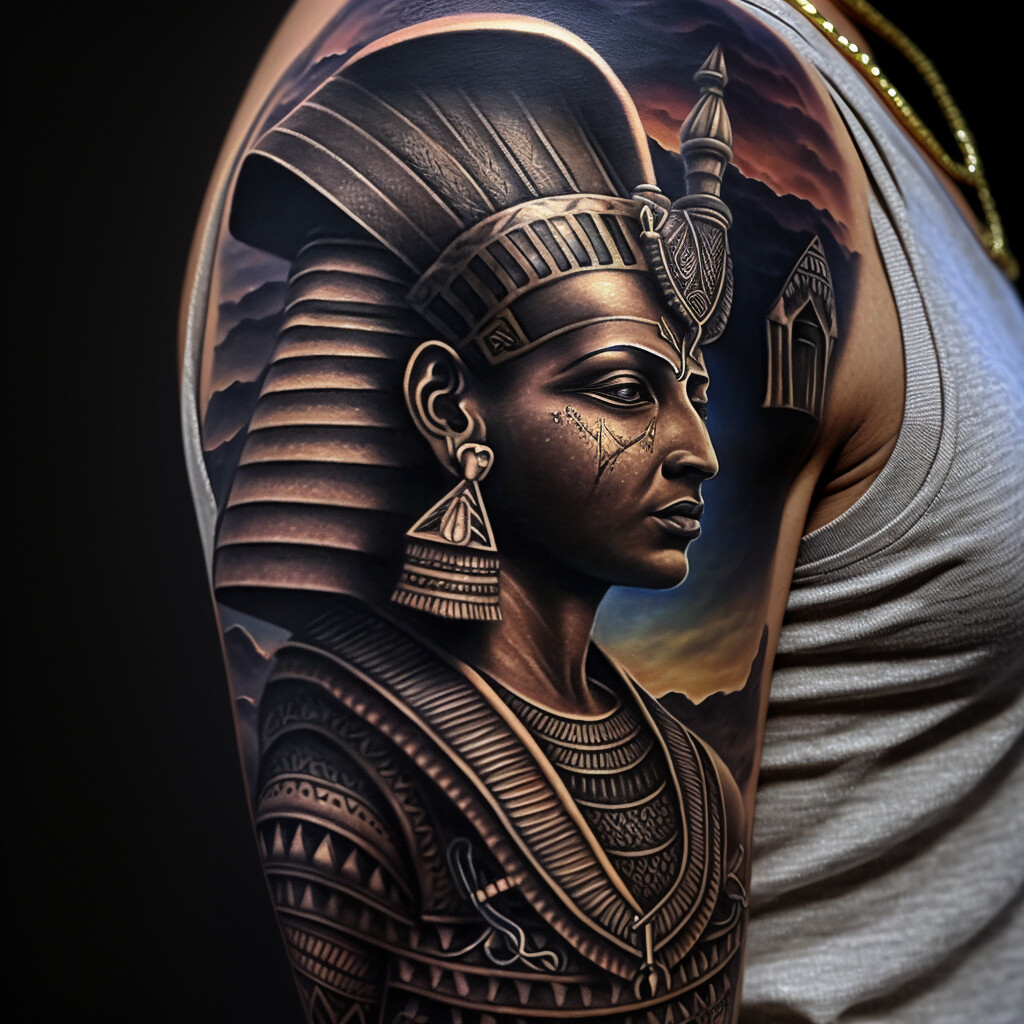
Origins of Pharaoh Tattoo: Unveiling the Enigmatic Symbol
The Pharaoh tattoo is a popular design that originated from ancient Egypt. The Egyptians were known to use tattoos as a form of decoration and identification. They believed that tattoos had magical properties that could protect them from harm and bring good luck.
The Pharaoh tattoo was specifically designed to honor the Pharaohs, who were the rulers of ancient Egypt. The Pharaohs were considered divine beings and were believed to have supernatural powers. They were also highly respected and admired by their people.

The Pharaoh tattoo typically features an image of the Pharaoh or a symbol associated with Pharaohs, such as the Eye of Ra or the Ankh. These symbols were believed to represent power, protection, and prosperity.
In addition to being a symbol of admiration for the Pharaohs, the Pharaoh tattoo also served as a way for ordinary Egyptians to express their loyalty to their ruler. Many Egyptians would get tattoos of their Pharaoh on their bodies as a sign of their allegiance.
Over time, as Egypt became more accessible to foreigners, the Pharaoh tattoo began to spread around the world. Today, many people from different cultures and backgrounds still choose to get a Pharaoh tattoo as a way to pay homage to this ancient civilization and its powerful rulers.
Pharaoh Tattoo Meaning: Unveiling the Symbolic Power
Now that we’ve explored the origins of pharaoh tattoos, let’s delve into the symbolism behind this ancient design. Pharaoh tattoos can have a variety of meanings, depending on the wearer’s personal interpretation. Here are a few common interpretations:
Power and Authority
The pharaohs of ancient Egypt were considered to be god-kings, holding immense power and authority over their people. They were believed to be the intermediaries between the gods and mortals, responsible for maintaining the balance of the universe through their actions and decisions. This aura of strength and leadership that surrounded the pharaohs has made them a popular subject for tattoo designs.
A pharaoh tattoo typically features the image of a pharaoh or a pharaoh’s mask, often embellished with symbols and motifs that were significant to ancient Egyptian culture. These may include images of pyramids, hieroglyphs, the Eye of Horus, and other symbols of power and protection.
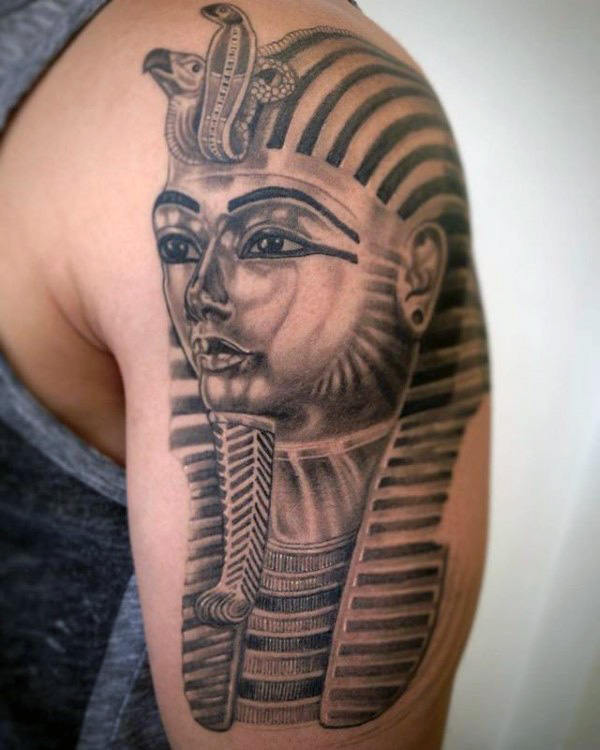
For those who choose to get a pharaoh tattoo, it can represent a desire for strength and authority in their own lives. It may also symbolize a connection to the rich history and mythology of ancient Egypt, and a reverence for the wisdom and power of the pharaohs. Some may even see it as a way to channel the spirit of the pharaohs, embodying their qualities of leadership and command.
As with all tattoos, the meaning and significance of a pharaoh tattoo will vary from person to person, depending on their individual experiences and beliefs. However, for those who are drawn to the power and mystique of ancient Egypt, a pharaoh tattoo can be a powerful symbol of strength, leadership, and authority.
Protection and Guidance
The pharaoh tattoo is a powerful symbol in ancient Egyptian mythology. It represents the divine power and authority of the pharaohs, who were believed to be the living embodiments of the gods on earth. The image of the pharaoh was often adorned with richly detailed clothing, jewelry, and headdresses, all of which emphasized their status as rulers of the land.
For those who choose to get a pharaoh tattoo, the symbolism can be quite significant. The tattoo can serve as a talisman, offering the wearer protection and guidance on their journey through life. It can also represent strength, resilience, and power, all qualities that are highly valued in many cultures.
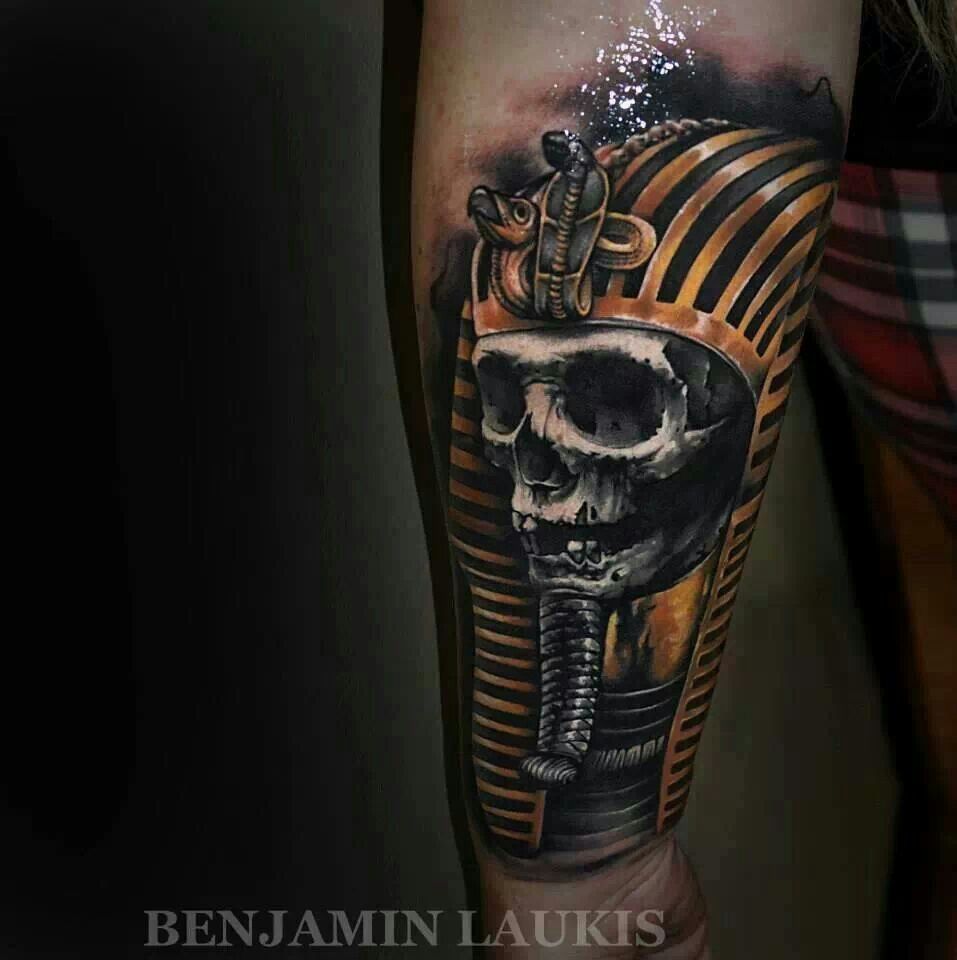
In ancient times, the pharaoh was seen as a bridge between the mortal world and the divine realm. They were responsible for maintaining balance and order in society, and were held in high esteem by their subjects. The pharaoh tattoo can evoke this sense of authority and responsibility, inspiring the wearer to lead with wisdom and compassion.
The design of a pharaoh tattoo can vary widely, depending on the preferences of the individual and the skills of the artist. Some people may choose to incorporate specific features, such as the headdress or ankh symbol, while others may opt for a more abstract representation of the pharaoh’s power and majesty.
Regardless of the design, getting a pharaoh tattoo can be a deeply personal and meaningful experience. For those who feel a connection to the mythology and history of ancient Egypt, it can be a way to honor that legacy and carry it with them always. And for those who simply appreciate the beauty and symbolism of the pharaoh, a tattoo can serve as a reminder of the important values and principles they hold dear.
Connection to Ancient Egypt
Ancient Egypt is a civilization that has captured the imaginations of people all over the world with its rich history, fascinating mythology, and unique art and architecture. The pharaohs, who were the rulers of ancient Egypt, are some of the most iconic figures from this era. They were believed to be divine beings, chosen by the gods to lead their people and maintain Ma’at, the cosmic balance.
Getting a pharaoh tattoo can be a powerful way to connect with this ancient civilization and honor its legacy. A pharaoh tattoo can take many forms, from a simple hieroglyphic symbol to an elaborate representation of a specific pharaoh. Some popular designs include the famous death mask of Tutankhamun, the Sphinx, or the Eye of Horus.
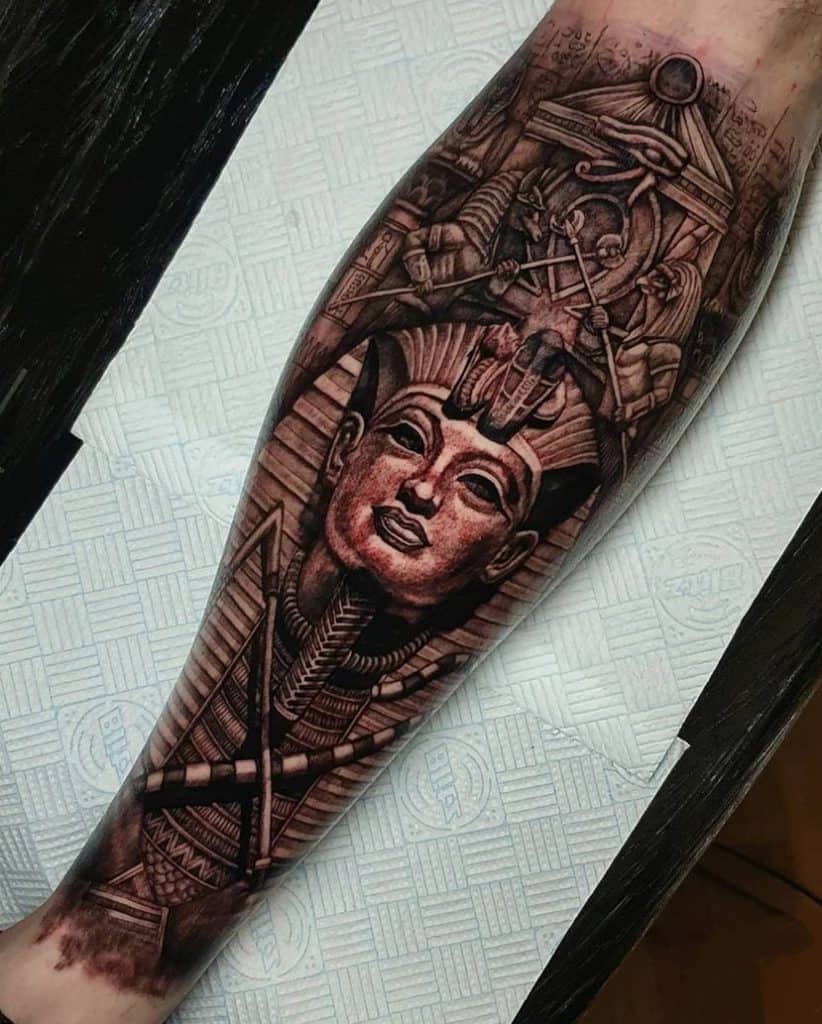
By wearing a pharaoh tattoo, you’re making a statement about your connection to this ancient civilization and the values it represents. The pharaohs were known for their wisdom, strength, and leadership, and getting a pharaoh tattoo can be a way to embody these qualities in your own life. You may feel a sense of pride in your heritage or simply be drawn to the timeless beauty and mystery of ancient Egypt.
Another reason why people get pharaoh tattoos is to keep the memory of the pharaohs alive. Ancient Egypt is a civilization that has endured for thousands of years, but it’s also one that has disappeared into the sands of time. By wearing a pharaoh tattoo, you’re helping to preserve this legacy and ensure that future generations will remember the achievements and contributions of ancient Egypt.
Transcendence
For many people, tattoos hold deep personal and symbolic significance. One such tattoo that has gained popularity in recent years is the pharaoh tattoo. The pharaohs were the ancient rulers of Egypt who built grand pyramids as tombs for themselves and were believed to achieve immortality in the afterlife.
For some individuals, the pharaoh tattoo represents the idea of transcendence – the ability to rise above the limitations of physical death and achieve eternal life. This belief is rooted in the ancient Egyptian religion, which held that the pharaohs were not just mortal rulers but divine beings with the power to become immortal through certain rituals and practices.
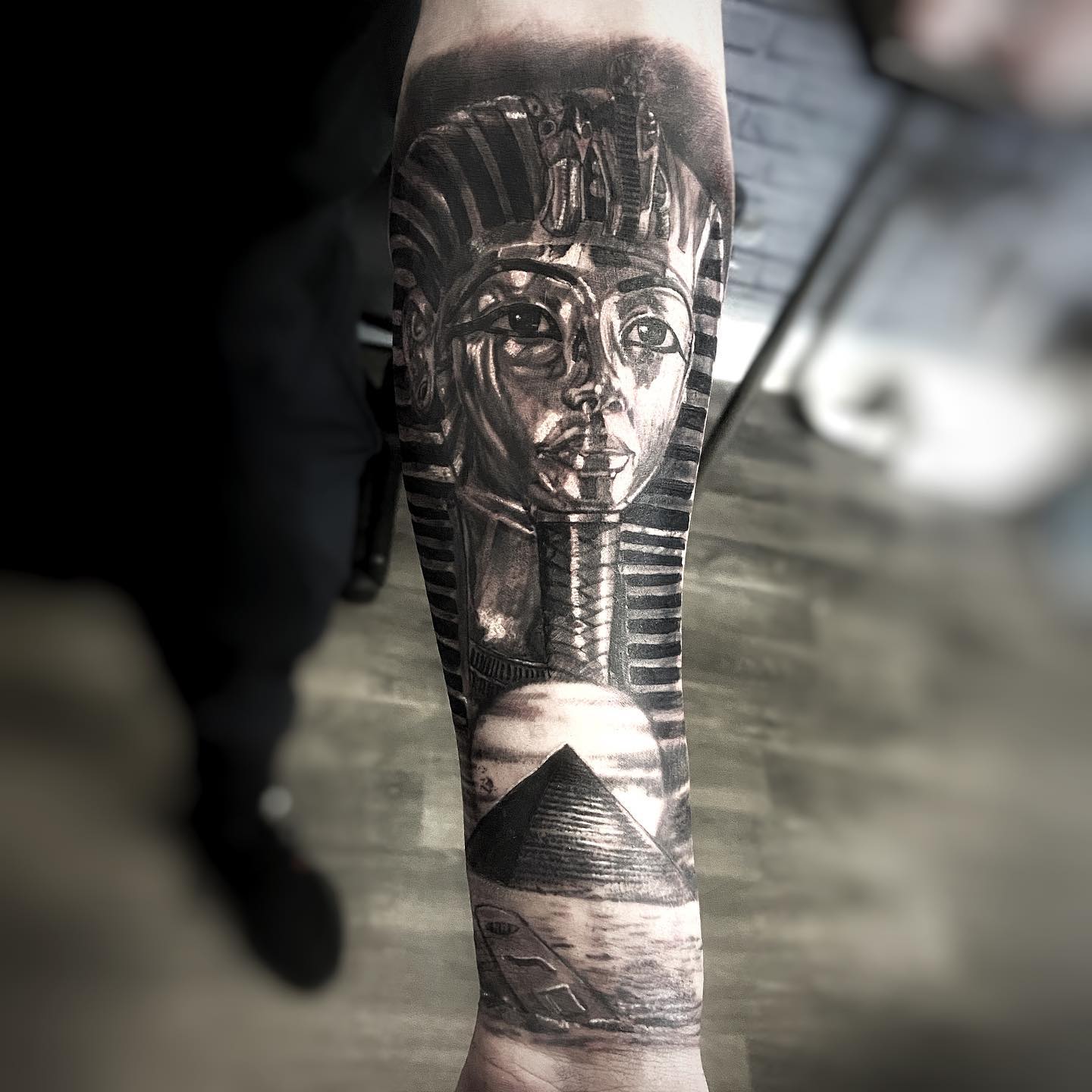
By getting a pharaoh tattoo, you are expressing your faith in the human spirit’s capacity to endure beyond bodily death. It’s a symbolic statement that recognizes the fundamental human desire for immortality and the possibility of transcending the limitations of life and death.
More broadly, the pharaoh tattoo can also represent power, strength, and wisdom. The pharaohs were known for their military might, political savvy, and cultural achievements. They were revered as wise and just leaders who could bring order to chaos and maintain stability in a complex society.
In this sense, a pharaoh tattoo can symbolize the qualities of leadership and determination that are necessary for success in life. It can serve as a reminder to stay strong and focused in the face of adversity and to strive for greatness in all aspects of one’s life.
Pharaoh Symbol Meaning: Understanding the Iconography
The pharaoh symbol was an important part of ancient Egyptian iconography, and it’s essential to understand its meaning before getting a pharaoh tattoo. Some common pharaoh symbols include:
The Ankh
The hieroglyphic symbol that represents eternal life and rebirth in ancient Egyptian culture is known as the Ankh. It is also referred to as the “key of life” or the “cross with a handle.” The Ankh was one of the most prevalent symbols in ancient Egyptian art and architecture, and it was used extensively in religious beliefs and practices.
The Ankh symbol is composed of three parts: a looped top that represents the sun rising above the horizon, a vertical line that represents the Nile River, and a cross-like shape at the bottom that represents life. The combination of these elements creates the image of a key with a loop on top, which is why the Ankh is sometimes called the “key of life.”
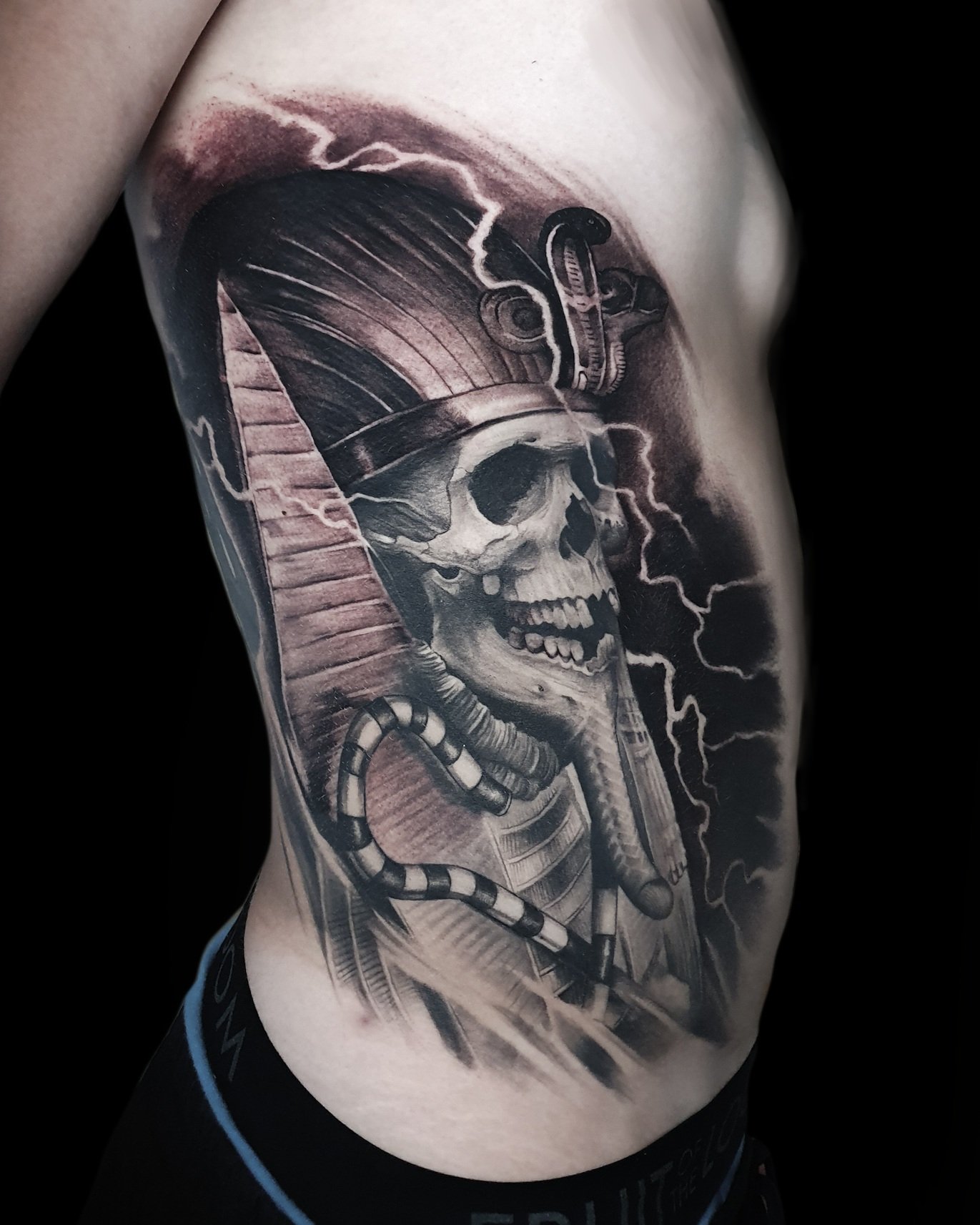
In ancient Egyptian mythology, the Ankh was believed to hold the power of eternal life and was associated with the gods and goddesses who controlled the afterlife. It was often depicted in the hands of pharaohs, who were believed to be divine and had the power to grant eternal life. Pharaohs were also seen as the intermediaries between the gods and the people and were responsible for ensuring the prosperity and well-being of their kingdom.
The Ankh symbol was used in a variety of contexts in ancient Egypt, including in tomb paintings, temple reliefs, and amulets. It was also used on everyday objects such as mirrors, cosmetic boxes, and pottery. The symbol was widely recognized throughout ancient Egypt and was used by people from all walks of life, not just the elite.
Today, the Ankh symbol remains an important cultural icon of ancient Egypt and is still used in modern Egyptian culture. Its association with eternal life and rebirth has made it a popular symbol among those interested in spirituality and alternative healing practices. The Ankh has also been adopted by various subcultures, including goth and hip-hop, where it is often used as a fashion accessory or tattoo.
The Eye of Ra
The Eye of Ra is a powerful symbol in ancient Egyptian mythology, representing protection and good health. This symbol is often depicted on the forehead of pharaohs as a sign of their divine protection and connection to the gods.
Ra was one of the most important gods in the ancient Egyptian pantheon, and was often associated with the sun and its life-giving properties. The Eye of Ra was seen as a manifestation of his power, and was believed to have the ability to protect against evil and illness.

In ancient Egyptian art, the Eye of Ra is often depicted as a stylized eye with a distinctive “teardrop” shape beneath it. This teardrop is said to represent the tears that Ra shed for humanity when he saw how they suffered under the oppression of evil forces.
The Eye of Ra was also closely associated with the goddess Hathor, who was seen as a protector of women and children. In some depictions, the Eye of Ra is shown as a feminine figure, emphasizing its protective qualities and association with femininity.
As mentioned earlier, the Eye of Ra was often placed on the foreheads of pharaohs as a symbol of their divine protection. It was believed that this symbol would help to ward off evil spirits and ensure the pharaoh’s good health.
The Scarab
The Scarab is a symbol that holds great significance in ancient Egyptian history and mythology. It is often depicted as a beetle, usually of the species Scarabaeus sacer, which was commonly found in Egypt. The Scarab was considered to be a sacred insect by the Egyptians, and it played an important role in their religion and beliefs about the afterlife.
One of the primary meanings associated with the Scarab in ancient Egyptian culture is regeneration and rebirth. This symbolism comes from the beetle’s habit of rolling balls of dung across the ground, which the Egyptians believed represented the sun being rolled across the sky. Because of this association with the sun, the Scarab was also linked to the god Khepri, who was believed to roll the sun across the sky each day.
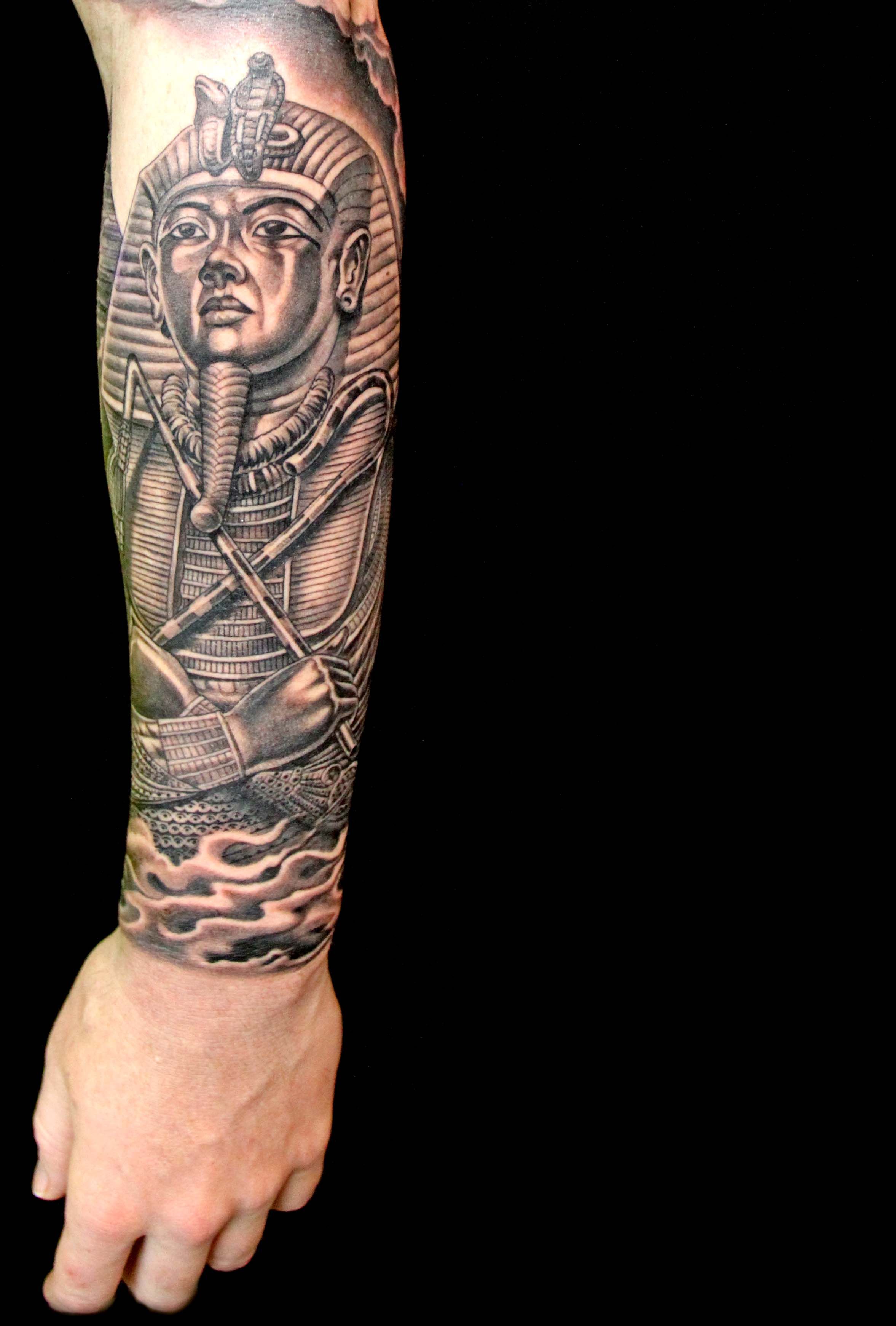
The Scarab was also believed to have the power to bring about transformation, renewal, and resurrection. In Egyptian mythology, the god Ra was said to travel through the underworld each night, and the Scarab was sometimes depicted as accompanying him on this journey. This association with the afterlife led many Egyptians to believe that wearing a Scarab amulet or piece of jewelry could help them achieve eternal life and rebirth in the next world.
Scarab amulets and other artifacts have been discovered throughout Egypt, dating back thousands of years. These objects were often made from precious materials like gold and lapis lazuli, and they were frequently inscribed with protective spells and prayers. Many of these amulets were worn by pharaohs and other members of the royal court, who believed that the Scarab’s powers would protect them from harm and grant them good fortune.
Today, the Scarab continues to be a popular symbol in art, jewelry, and fashion. Its association with regeneration and rebirth makes it a common motif in spiritual and mystical contexts, and many people still wear Scarab-inspired jewelry as a talisman for good luck and protection. Overall, the Scarab remains an enduring symbol of ancient Egyptian culture and mythology, and its powerful symbolism continues to captivate people around the world.
The Udjat
The Udjat, also known as the Eye of Horus, is a symbol that holds significant meaning in ancient Egyptian mythology. The symbol takes its name from the god Horus, who was considered to be the god of the sky and kingship. In Egyptian mythology, Horus was believed to have lost an eye during a battle with his uncle Set. After the event, the eye came to represent sacrifice, restoration, healing, and protection.
The Udjat is often depicted as a stylized eye that is surrounded by markings that resemble feathers. The marking above the eye represents a falcon’s eyebrow, while the line below the eye is said to represent a cheekbone. The eye itself is believed to represent the moon and the sun, which were important symbols in Egyptian mythology.
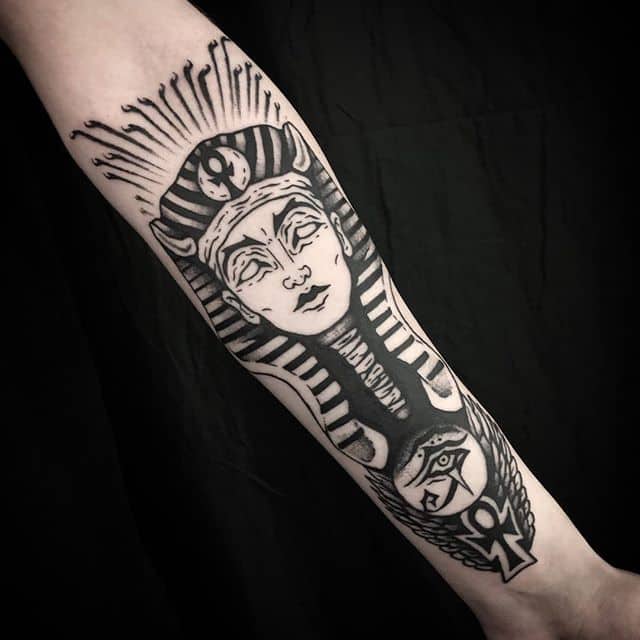
In addition to being a powerful symbol of protection and good health, the Udjat was also associated with royalty and divine power. It was common for pharaohs to adorn themselves with the symbol on their foreheads, as it was believed to bring them special divine protection and guidance. In some cases, the Udjat was even used as a magical talisman to ward off evil spirits and protect against disease.
Meaning of Different PharaohTattoo Designs and Interpretations
Ready to get inspired? Here are a few pharaoh tattoo ideas to get you started:
Traditional Pharaoh Portrait
A classic pharaoh portrait tattoo is a timeless choice, capturing the mystique and allure of ancient Egypt. Whether you choose to depict a specific pharaoh or opt for a more generalized image, a traditional pharaoh tattoo is sure to turn heads.
Ankh Symbol
The ankh symbol is a powerful Egyptian icon representing life and vitality. By combining the ankh symbol with a pharaoh image, you can create a tattoo design that’s both meaningful and visually stunning.

Hieroglyphics
If you’re a fan of ancient Egyptian writing, why not incorporate some hieroglyphics into your pharaoh tattoo? You could choose a phrase or word that’s particularly meaningful to you, or simply opt for some decorative script to add texture and depth to your tattoo.
Sphinx
The Great Sphinx of Giza is one of the most iconic symbols of ancient Egypt, making it a popular choice for pharaoh tattoos. Whether you choose to depict the full statue or just its head, a sphinx tattoo is sure to make a bold statement.
Eye of Ra
The Eye of Ra is another powerful Egyptian symbol representing protection and healing. Incorporating this symbol into your pharaoh tattoo can add an extra layer of meaning and symbolism.
Conclusion: A sense of dignity
Pharaoh tattoos are a powerful symbol of ancient Egyptian culture, representing strength, power, and transcendence. Whether you choose a traditional portrait of a pharaoh or opt for a more customized design, a pharaoh tattoo is sure to make a bold statement and connect you with the rich history of this fascinating civilization.
Remember to approach your tattoo with respect and sensitivity, understanding the cultural significance of this design. By working with an experienced tattoo artist and choosing a design that speaks to you, you can create a one-of-a-kind piece of art that honors the legacy of the pharaohs.

I am Harvey Berry, a tattoo enthusiast who has immersed himself in the diverse world of ink, passionately exploring the beauty and artistry within each tattoo. My mission extends beyond uncovering the aesthetics of tattooing; it involves sharing in-depth knowledge across all aspects of this art form.
Fueled by genuine curiosity and love for every facet of tattooing, I have diligently crafted well-researched articles, with a special focus on the Tattoo Meaning of Impeccable Nest section. Here, my aim is to help the tattoo community gain a deeper understanding of the meanings and values embedded in each tattoo.
One of my primary goals is to encourage responsible decision-making when it comes to getting inked. I recognize that choosing to get a tattoo is a significant personal decision that requires careful consideration. Hence, I provide diverse resources covering the meaning of tattoos, the tattooing process, aftercare tips, and other valuable information.
Whether you are a seasoned tattoo enthusiast or embarking on your first exploration of the world of body art, I aspire to be a reliable resource for you at every step of your journey. I hope that my extensive knowledge of tattoos, especially in the Tattoo Meaning section, will assist you in finding inspiration to express yourself through the art of tattoos.
